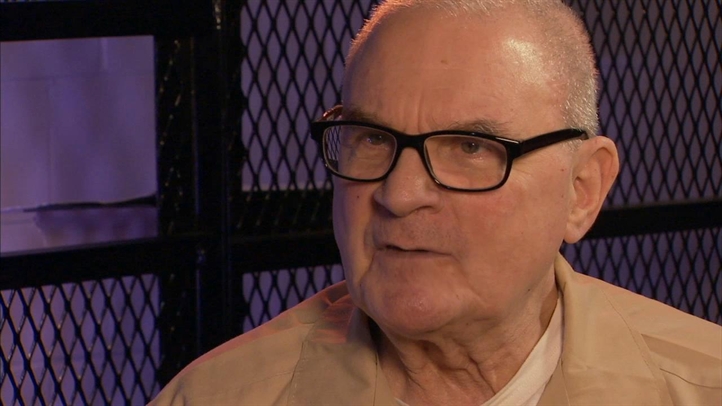ALREADY SAW LOTS OF FORECASTS?
If you follow weather, even a little bit, you’ve surely heard someone’s forecast for the coming winter. Chances are, you’ve heard several. Some come from “official” sources (Climate Prediction Center), some from respected meteorological firms (The Weather Channel), and some that I’ll just call “other”. People start asking about the winter forecast even before the previous winter is over. There’s more and more pressure to issue one earlier each year.
WANT A FORECAST FOR OCTOBER 25, 2060?
If there’s enough demand for it (especially if someone is willing to pay for it), there will be someplace that will give them a forecast for a specific date 45 years from now. Why not? No one will ever find out if it’s right or not. And a specific day’s forecast 45 years from now will be every bit as accurate as one 45 days from now. That’s because both have ZERO SKILL! That is, neither will be better than flipping a coin. I use 45 days/years because AccuWeather has been using specific 45 day forecasts for a while. And I’m sure there are people who take it seriously, because they want to know. There are even companies that already do specific forecasts for an entire year. And they make money doing it!
AT BEST, SEASONAL FORECASTING IS DIFFICULT
While there is no evidence that anyone can predict weather for specific days beyond a couple of weeks, more generalized forecasts of the next few months has shown some skill. It’s more like a little skill. It is better than flipping a coin, but not by a lot.
I started doing winter forecasts of some sort in 1997, which just so happened to be when the strongest El Nino in history was developing. That was no accident. There had been some recent scientific papers that connected strong El Niño’s with warm, nearly snow-free winters in our part of the world. And I went on the air and predicted that. We ended up with less than one inch of snow for the entire winter!
The problem was that now people thought we could predict for the winter season all the time! And when people (in my case, known as TV viewers) demand something, we tend to give it to them. It’s like the business slogan, “The customer is always right.” My bosses had that philosophy, so now we had to make a winter forecast every year, sometime in November. They promoted them heavily, and the ratings actually spiked on those nights. So what happened? Every other station started doing it, too. After all, the people had spoken!
This was all wonderful, except for the fact that no future winter was as clear-cut as the first one. We had some successes and failures in the 17 years since then. The science of seasonal forecasting has improved a bit, but there are still important factors that simply don’t show up until November. That is why, no matter who asks, I tell them that it’s “too soon”. But the research has been going on since summer ended, and there are some big things to look at this year.
FACTORS FOR 2015-16 WINTER:
EL NINO
Of course, El Nino is what everyone is talking about. It may be just as strong, or even stronger, than the one in ’97-’98. But no two weather patterns are the same, and no two ocean patterns are the same. Take a look at the maps, side by side, of ocean temperatures (compared to “normal”) then and now:
Local
Breaking news and the stories that matter to your neighborhood.
Yes, the area of super-warm water in the Tropical Pacific (middle of the screen) looks the same. But freeze the video at the end and you’ll also see very warm water far north of the El Nino area. The area off of California has been called “The Blob”. There’s another warm area not far off the Alaska coast. Those are major differences from 1997, and we can’t just ignore them. If they weren’t there, I would likely be predicting a warm winter with very little snow. But they are there.
“THE BLOB” & OTHER PACIFIC WARMTH
Those other areas of very warm water in the Pacific are not as mysterious as some are saying. They are part of other natural oscillations known as the PDO and EPO. Those areas had a lot to do with the past two rough winters in the Eastern U.S. That was a big factor in the 100”+ of snow that Boston got (even New York City had more than 50” in each of the past two winters). We’ve been on the edge of the real snowy winter area both years. Those warm blobs are a factor pointing at colder and snowier for us.
SNOW COVER IN EURASIA (AND BEYOND)
This is the main reason I want to wait until November to make a winter forecast. The increase in snow on the ground across the world in Eurasia has a very high correlation with our winter weather. And the most important number is the increase during the month of October. So we have to wait until that data is in. It’s not just a statistical relationship that is coincidental: researchers have shown how the snow cover there actually changes weather patterns across the world that eventually affect us. Snow in Canada is another factor, but, believe it or not, the correlation isn’t as strong as Eurasian snow.
TO SUM IT UP:
Of course, there are other factors across the globe, from soil moisture in the U.S. to winds way up in the stratosphere. That’s part of the problem: there are so many factors that they sometimes cancel each other out.
We were able to get severe winters in the Northeast U.S. in the past two years even without the extreme Arctic and North Atlantic blocking patterns. Those led to the severe winters from 2009-11. What if we somehow combine the extra storminess due to the El Nino, PLUS the Blob influence PLUS Arctic blocking as a result of the Siberian snow? Then we have the potential for a BIG winter. Information coming in the next week or two may be the determining factors.
Stay tuned.
Glenn “Hurricane” Schwartz
Chief Meteorologist, NBC10 Philadelphia



